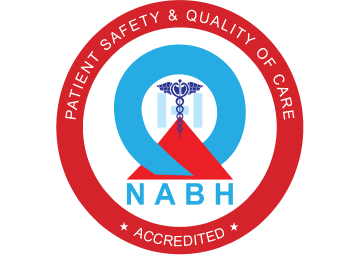Blepharoplasty (Eyelid Rejuvenation)
What is Blepharoplasty?
- Blepharoplasty is a type of plastic surgery in which the excess skin and fat over the eyelids are corrected to give a youthful appearance to the eyelids and the face.
Why do people opt for upper blepharoplasty?
- As we age, the skin and ligaments of the eyelids become loose and the fat tends to prolapse over the upper eyelids resulting in the upper eyelids looking droopy, unattractive and may even cause disturbances in the peripheral vision.
Why do people opt for lower blepharoplasty?
- With loss of fat in the face due to ageing, the skin over the lower eyelids become loose. With the ligaments in the lower eyelid losing their strength, the fat tends to prolapse creating baggy lower eyelids. There seems to be a definitive ridge between the lower eyelid and the face called as the “Tear Trough” which simulates ageing
How is Upper Blepharoplasty done?
- Some patients may opt to have Upper blepharoplasty alone. In such cases it can be done under local anaesthesia. If it is combined with lower blepharoplasty or other procedures, it can be done under general anaesthesia. An incision is made few mm above the eyelashes of the upper eyelid and the excess skin is removed. In severe cases there may be prolapse of fat from the upper eyelid which can be removed. With ageing as there is loss of volume of fat, in some cases we may add fat to the upper eyelid to male it look more beautiful.
How is Lower Blepharoplasty done?
- Lower blepharoplasty is done under general anaesthesia. We prefer to make an incision in the conjunctival side of the lower eyelid. The prolapsed fat is removed and the loose ligaments of the lower eyelid are released. The distinction between the lower eyelid and the face known as Tear Trough deformity is removed by injecting fat which can be got from other areas of the body such as in the abdomen and medial thighs. If there is excess skin still remaining in the lower eyelid, a strip of skin can be removed from the lower eyelid close to the eyelash of the lower eyelid.
What is the normal post operative course?
- Blepharoplasty is mostly done as a daycase in which the patient comes in the morning and goes in the evening. If needed the patient may stay in the hospital for 1 night. The patient will have mild pain which will be controlled by painkillers. The patient will have bruising and swelling over the face which goes away in 2 to 3 weeks. The swelling of the eyelids may prevent the eyes from closing and cause watering of the eyes. To prevent this we may temporarily suture the upper and lower eyelid partially for 4 days to a week. After a week this suture will be removed. Cold packs can also be applied over the face to reduce the swelling. The patient is advised to keep the head in the upright position to reduce the bruising and swelling over the face. Makeup for the eyelids and contact lenses are to avoided for 2 to 3 weeks till the edema over the eyelids settle. Patients are advised to wear sunglasses to avoid direct sunlight when they go out as this can cause hyperpigmentation over the scar. Patient can take a shower the next day. If only upper blepharoplasty is done the patient can go to work the next day or in two days. If lower blepharoplasty is also done depending on the edema, the patient can go to work in 1 to 3 weeks.
What are the risks and complications associated with blepharoplasty?
- As mentioned earlier blepharoplasty can be associated with pain, bruising of the eyelids causing haematoma of the eyelids, excess swelling of the eyelids which can prevent closing of the eyelids and watering of the eyes.




